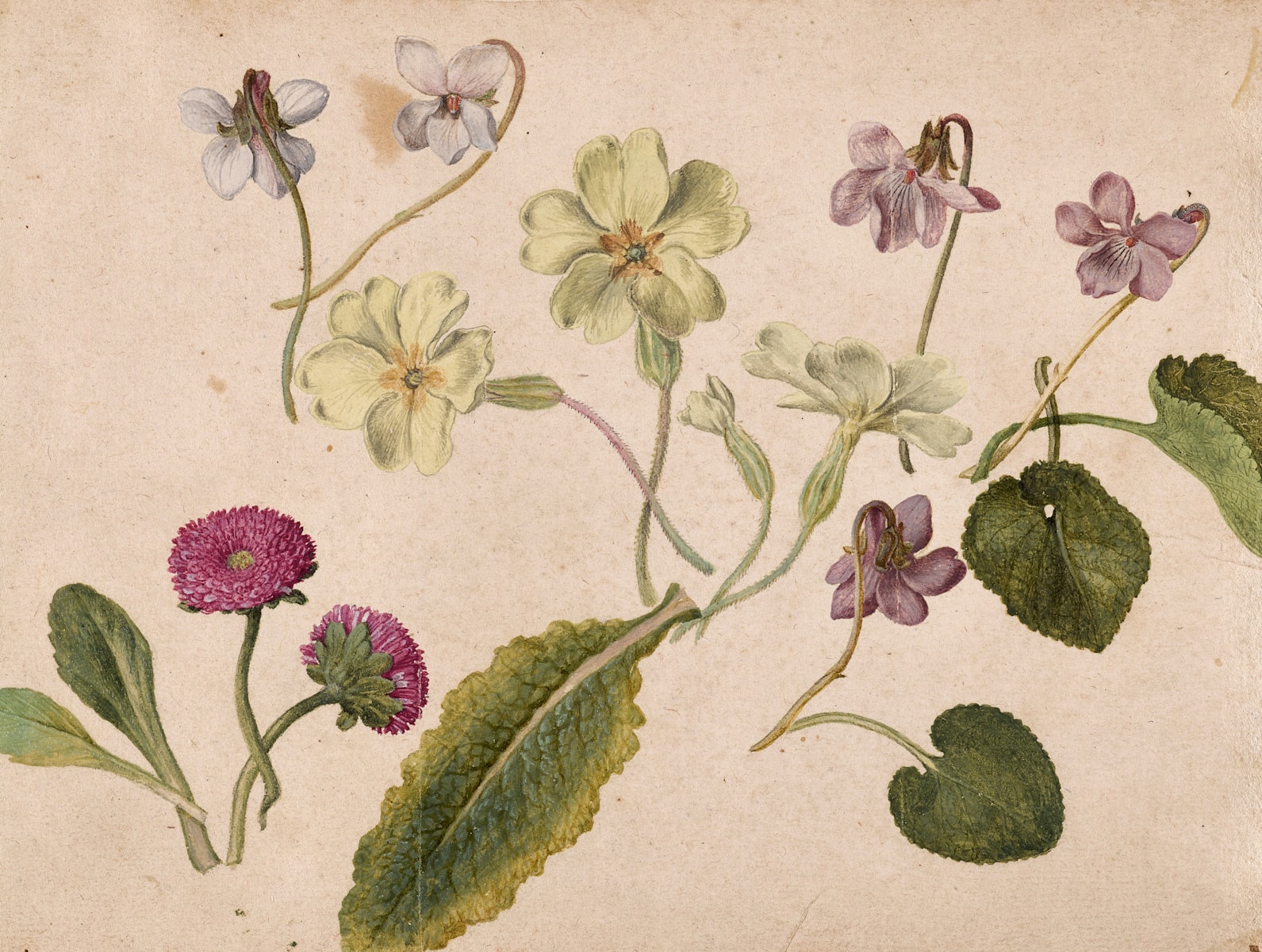
Jacques Le Moyne de Morgues (Dieppe c. 1533 - London 1588)
A sheet of studies of flowers: two double daisies, four primroses and five violets with separate studies of their leaves
Description:
watercolour and gouache over black chalk
157 x 208 mm
Provenance:
‘Old Master Drawings including an Important Set of Natural History Studies by Jacques le Moyne de Morgues’, Sotheby’s, New York: 21 January 2004, Lot 38
with Artemis Fine Arts, London
where acquired by the present owner in 2004
Literature
Francois Borne and Alan Wintermute, Old Master Drawings and Paintings, New York: Artemis – C. G. Boerner, 2004, no. 4.
Sohee Kim, Jacques le Moyne de Morgues (c. 1533-1588) and the Origins of Seventeenth-Century Netherlandish Flower Still Lifes, PhD Dissertation, 2009, pp. 74-75 and 82.
Peter Bower, ‘Magical illusion: two collections of watercolours by Jacques le Moyne de Morgues (c1533-1588)’, The Quarterly. The Journal of the British Association of Paper Historians, LXXXIV, April 2010, pp. 1-15 (as sheet 10).
Monique Kornell and Dániel Margóscy, ‘‘A Spring of Immortal Colours’. Jacques Le Moyne de Morgues (c.1533-1588) and Picturing Plants in the Sixteenth Century’, Journal of the Warburg and Courtauld Institutes, 2023, p. 122.
Note:
This refined sheet of flower studies belongs to a group of twenty-seven botanical drawings, executed in watercolour and gouache, by the itinerant French artist Jacques Le Moyne de Morgues. The drawings were once assembled into an album, likely in 19th-century France, and dispersed at Sotheby’s in January 2004. It is probable, however, that the drawings had been compiled into an earlier album as much as two centuries prior, as all are laid down on the same 17th-century French paper and numbered in an early hand.
French watermarks on five of the drawings from the Sotheby's album suggest that the works date to Le Moyne’s earlier years – almost certainly before his move to England around 1572. As a Protestant, Le Moyne fled Huguenot persecution in France and settled in London during the French Wars of Religion. Stylistically, the group may be compared to an album in the Victoria & Albert Museum, London, dated to circa 1568–1572, when Le Moyne was still active in France.
The present drawing represents a moving testimony of Le Moyne's fascination with the violet, a flower which he had used as the subject of one of his illuminations on gold ground, in a double-sided watercolour at the V&A, a second drawing from the same album, and a drawing from the so-called ‘Du Marry’ album. Each of the minutely observed flowers on the drawing can be identified. The double daisy belongs to the genus Bellis; the violets to genus Viola; the primrose is Primula vulgaris Primulacae, the English primrose. It is amusing to note that during the Elizabethan period, a cake called Primrose Pudding was a favourite dessert.
Please contact us for a full catalogue entry.
